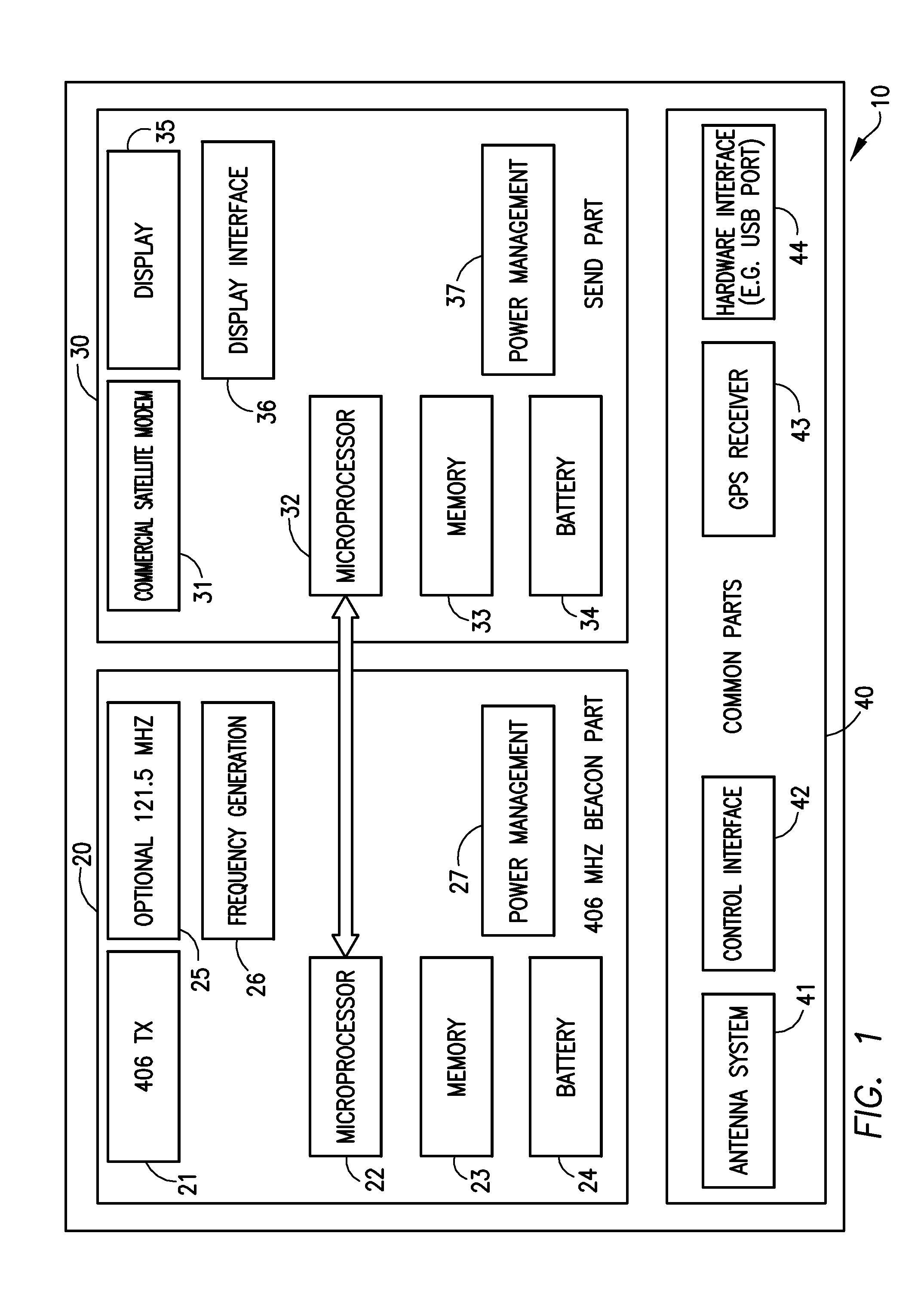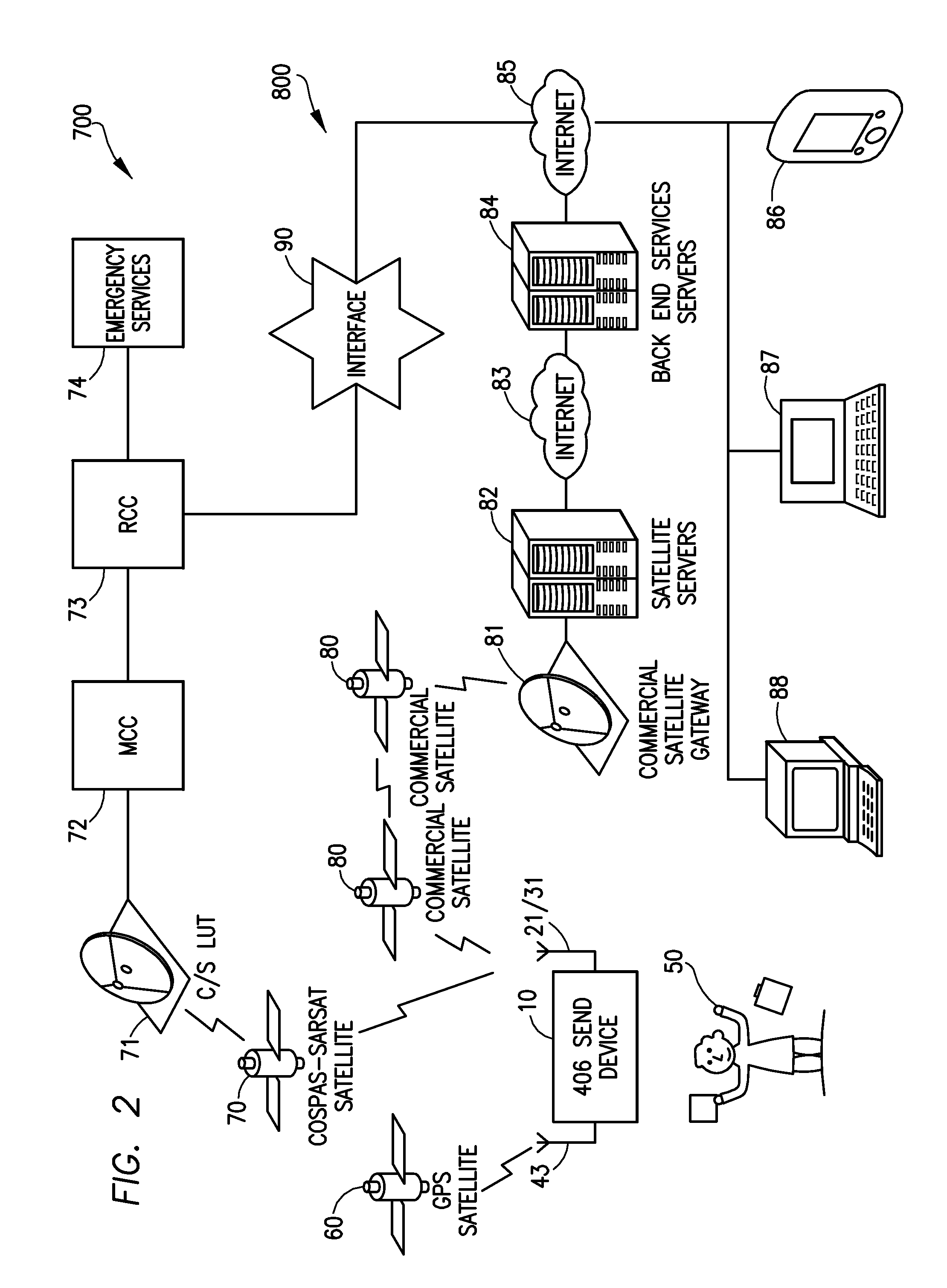Dual-satellite emergency locator beacon and method for registering, programming and updating emergency locator beacon over the air
a dual-satellite, emergency technology, applied in the direction of measuring devices, instruments, electrical appliances, etc., can solve the problems of affecting the response time, the distress of the responder, and the distress of the sender, so as to facilitate the relevant emergency services to communicate backward and forward with the person in distress
- Summary
- Abstract
- Description
- Claims
- Application Information
AI Technical Summary
Benefits of technology
Problems solved by technology
Method used
Image
Examples
Embodiment Construction
Combined 406-SEND Beacon and Dual-Satellite Communications
[0022]With reference to FIG. 1, shown is a block diagram of one embodiment of the communication device of the present invention configured as dual-satellite emergency locator beacon 10. Beacon 10 comprises three primary sections including a 406-MHz section 20, a SEND section 30, and a shared section 40. The 406-MHz section 20 is generally understood as the portion of beacon 10 that is configured to communicate over a Cospas-Sarsat satellite communications network that operates typically on the 406 MHz frequency. The SEND section 30 is a portion of device that is configured to communication over a commercial satellite communication system such as a commercial satellite telephone network like the Iridium system. Other satellite communication systems are equally suitable, however. The shared section 40 is the portion of the device that includes shared hardware and software components or other hardware and software components tha...
PUM
 Login to View More
Login to View More Abstract
Description
Claims
Application Information
 Login to View More
Login to View More - R&D
- Intellectual Property
- Life Sciences
- Materials
- Tech Scout
- Unparalleled Data Quality
- Higher Quality Content
- 60% Fewer Hallucinations
Browse by: Latest US Patents, China's latest patents, Technical Efficacy Thesaurus, Application Domain, Technology Topic, Popular Technical Reports.
© 2025 PatSnap. All rights reserved.Legal|Privacy policy|Modern Slavery Act Transparency Statement|Sitemap|About US| Contact US: help@patsnap.com



